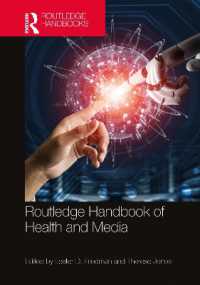Full Description
Has the language industry of the 21st century been racing ahead of the translation profession and leaving translators behind? Or are translators adapting to new sociotechnical realities and societal demands, and if so, how? The chapters in this volume seek to shed light on the profiles and position of human translators in the current decade.
This collection draws together the work of leading authors to reflect on the constantly evolving language industry. The eight chapters present new perspectives on, and concepts of, translation in a digital world. They highlight the shifts taking place in the sociotechnical environment of translation and the need to address changing buyer needs and market demands with new services, profiles and training. In doing so, they share a common focus on the added value that human translators can and do bring to bear as adaptive, creative, digitally literate experts.
Addressing an international readership, this volume is of interest to advanced students and researchers in translation and interpreting studies, and professionals in the global language industry.
Contents
List of contributors
Acknowledgements
The human translator in the 2020s: An Introduction
Gary Massey, Elsa Huertas-Barros and David Katan
1. Translation's new high-tech clothes
Félix do Carmo and Joss Moorkens
2. Teaching translation technologies: an analysis of a corpus of syllabi for translation and interpreting undergraduate degrees in Spain
Roser Sánchez-Castany
3. Translation, translation revision and post-editing competence models: where are we now?
Isabelle Robert, Jim J. J. Ureel and Iris Schrijver
4. Weaving adaptive expertise into translator training
Erik Angelone
5. Tools for transforming translators into homo narrans or 'what machines can't do'
David Katan
6. 'Expanding' or 'rebranding' the translation concept? A pedagogical approach to future-proofing the translation profession in the 2020s
Juliet Vine and Elsa Huertas Barros
7. Creativity as an added value in translators' training: learning through transcreation
Marián Morón
8. The translator as a plain text designer for the Public Administration: a necessary role?
Elena Ruiz-Cortés
Index






